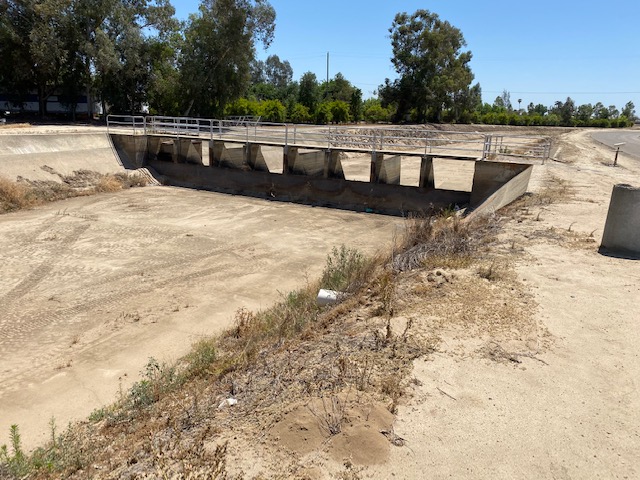 By Geoff Vanden Heuvel [This Article first appeared in the Milk Producers Council Newsletter.]
By Geoff Vanden Heuvel [This Article first appeared in the Milk Producers Council Newsletter.]
It took me a while, but I finally got through all 122 pages of the court order, issued a few weeks ago by Federal District Court Judge Dale A. Drozd, [US District Court Eastern District of California, Fresno] that will dictate how water will flow through the Bay-Delta between now and September 30. I’d heard it before, but it is still shocking to read the dictates of the Endangered Species Act (ESA) on the pages of a court order cited by the Judge:
still shocking to read the dictates of the Endangered Species Act (ESA) on the pages of a court order cited by the Judge:
“Congress has determined that under the ESA the balance of hardships always tips sharply in favor of endangered or threatened species, courts considering and issuing injunctive relief under Section 7(a) of the ESA do not have the discretion to consider countervailing allegations of economic costs. Evidence regarding purely economic consequences of an injunction proposed to address an ESA violation is therefore arguably not relevant to the court’s evaluation of that proposed injunctive relief. That is because preserving an endangered species has an “incalculable value.”
The court goes on to say, in reference to another court decision:
“There, after being presented with evidence that the requested remedies would result in water shutoffs that would “financially ruin farmer families” the court nonetheless acknowledged that “typically the interests of the protected species outweigh those of farmers and ranchers.”
We are in a very tough spot. This court case required the Judge to decide between dueling scientists. A major focus was how sensitive winter run chinook salmon are to temperature during the early part of their life. The salmon run that originates downstream from the Shasta Dam is endangered. A water temperature of 53.5 degrees is optimal for the salmon eggs which hatch to become fry. Temperatures above that cause increased mortality, which greatly accelerates over 56 degrees. Water levels at Lake Shasta are low, greatly reducing the cold-water pool at the bottom of the lake. The prospects for increasing the water supply behind Shasta Dam are not good because of the continued drought. The specific reason for this issue being presented to the Judge for a decision is ongoing litigation over the 2019 Biological Opinions governing delta water operations, which were adopted by the federal agencies in 2019. That federal decision was immediately objected to by the State who sued the federal agencies and adopted their own plan for operating the State Water Project. The State and Federal agencies earlier this year jointly prepared an Interim Operating Plan (IOP) that is different from the federal or the state plan. The environmentalists and the water agencies objected to the IOP and brought the issue to Judge Drozd for decision.
Shasta Dam is endangered. A water temperature of 53.5 degrees is optimal for the salmon eggs which hatch to become fry. Temperatures above that cause increased mortality, which greatly accelerates over 56 degrees. Water levels at Lake Shasta are low, greatly reducing the cold-water pool at the bottom of the lake. The prospects for increasing the water supply behind Shasta Dam are not good because of the continued drought. The specific reason for this issue being presented to the Judge for a decision is ongoing litigation over the 2019 Biological Opinions governing delta water operations, which were adopted by the federal agencies in 2019. That federal decision was immediately objected to by the State who sued the federal agencies and adopted their own plan for operating the State Water Project. The State and Federal agencies earlier this year jointly prepared an Interim Operating Plan (IOP) that is different from the federal or the state plan. The environmentalists and the water agencies objected to the IOP and brought the issue to Judge Drozd for decision.
There are also other endangered species in the delta. The delta smelt has been on the endangered list since the early 1990s. The Judge addressed delta smelt issues as well in his order, citing an expert who said:
“There is considerable concern that the Delta Smelt face imminent extinction in the wild. None have been caught in the standard sampling for the last four years. The standard sampling addresses a small fraction of the waters of the estuary so we could be missing some that are still there. A newer year-round sampling program targets areas and water conditions where Delta Smelt are expected to occur and two Delta Smelt were found in 2021, so they appear to be exceptionally rare rather than extinct. For the last 25 years, high spring outflows have usually foretold upswings in the autumn abundance of Delta Smelt. But despite the high outflows in spring 2017 and above-average outflows in 2018 and 2019, Delta Smelt have almost disappeared.”
conditions where Delta Smelt are expected to occur and two Delta Smelt were found in 2021, so they appear to be exceptionally rare rather than extinct. For the last 25 years, high spring outflows have usually foretold upswings in the autumn abundance of Delta Smelt. But despite the high outflows in spring 2017 and above-average outflows in 2018 and 2019, Delta Smelt have almost disappeared.”
Through the 122 pages, the Judge systematically deals with all the objections presented by the parties and in the end adopts the joint federal-state Interim Operating Plan.
“The IOP modifies the decision-making guidelines and structure in ways to reinforce the IOP’s prioritization of winter run [salmon] habitat needs. The guidelines come in the form of a prioritization system that gives first priority to public health and safety. Second priority is given to the habitat needs of winter-run, which are embodied in (a) temperature targets discussed above that are designed to prevent catastrophic temperature dependent mortality in dryer years and (b) the carryover targets that acknowledge the demonstrated need to plan ahead for subsequent years. Only once a water management plan is in place that addresses the second priority for the longest period possible can the third and four priorities be satisfied: deliveries to senior water contractors [Sacramento Valley] and to “Level 2” wildlife refuges; and other deliveries.”
mortality in dryer years and (b) the carryover targets that acknowledge the demonstrated need to plan ahead for subsequent years. Only once a water management plan is in place that addresses the second priority for the longest period possible can the third and four priorities be satisfied: deliveries to senior water contractors [Sacramento Valley] and to “Level 2” wildlife refuges; and other deliveries.”
It seems clear to me that until the drought ends, south of delta water users will not get much water out of Northern California. Furthermore, whatever strategy has been deployed by the agencies in charge of the delta smelt recovery effort over the past 30 years, which has most consisted of restricting water deliveries to farms and towns, has failed miserably. Those agencies are unaccountable for the massive economic costs this has inflicted because Congress dictates that economic costs cannot be considered when the survival of an endangered species is at stake. This might be a subject to bring up with candidates for Congress over the next several months as they come soliciting your votes and campaign contributions. The other thing that seems obvious is that much more storage needs to be constructed – not just for water supply – but also for cold water supply since it is vital to meeting the needs of the fish while having some left over for the people. The proposed Sites Reservoir in the Sacramento Valley should be built immediately and the project to raise Shasta Dam by 18 feet, which would add about 650,000 acre-feet of storage to the lake, should also be done ASAP.
Sites Reservoir in the Sacramento Valley should be built immediately and the project to raise Shasta Dam by 18 feet, which would add about 650,000 acre-feet of storage to the lake, should also be done ASAP.
There was other water news this week. On Tuesday, Assemblyman Adam Gray published an article calling for an audit of the water supply forecasting done by the state Department of Water Resources that overestimated mountain runoff and therefore caused the premature release of hundreds of thousands of acre-feet of water to the ocean. You can read the article here.
Also on Tuesday, Governor Gavin Newsom announced the signing of a Memorandum of Understanding between the state and several water agencies, which is being brought forward as the beginnings of a Voluntary Settlement Agreement for meeting the water quality requirements of the delta. This could be a very positive thing, however there are significant water agencies with rights to water that flows to the delta who are not party to this agreement. So, there is cheering and grumbling all at the same time. You can read about it here and here.
On Monday, Newsom issued an emergency Executive Order dictating urban water suppliers implement their water shortage contingency plans. It also targets the banning of irrigation of “non-functional turf” in the commercial, industrial and institutional sectors. The order also requires the State Water Resources Control Board to do inspections and bring enforcement actions against illegal diverters and those engaging in the “wasteful and unreasonable use of water”. [One wonders if diverting water to protect non-existent delta smelt could be considered wasteful and unreasonable.] The order also requires county, city or other public agencies to obtain written verification from the local Groundwater Sustainability Agency before allowing any new groundwater well. The order does instruct the Water Quality Control board to accelerate approvals for projects that enhance the ability to capture high precipitation events for local storage or recharge. You can read the proclamation here.
Geoff Vanden Heuvel is the Director of Regulatory and Economic Affairs for the Milk Producers Council.
DISCLAIMER OF RESPONSIBILITY; Waterwrights.net strives to provide its clients with the most complete, up-to-date, and accurate information available. Nevertheless, Waterwrights.net does not serve as a guarantor of the accuracy or completeness of the information provided, and specifically disclaims any and all responsibility for information that is not accurate, up-to-date, or complete. Waterwrights.net’s clients therefore rely on the accuracy, completeness and timeliness of information from DAW entirely at their own risk. The opinions expressed in this report are those of the author and do not represent any advertisers or third parties.
ALL RIGHTS RESERVED. Copyright 2022 by WaterWrights.net/DAW
































